Mental Health in
CINEMA

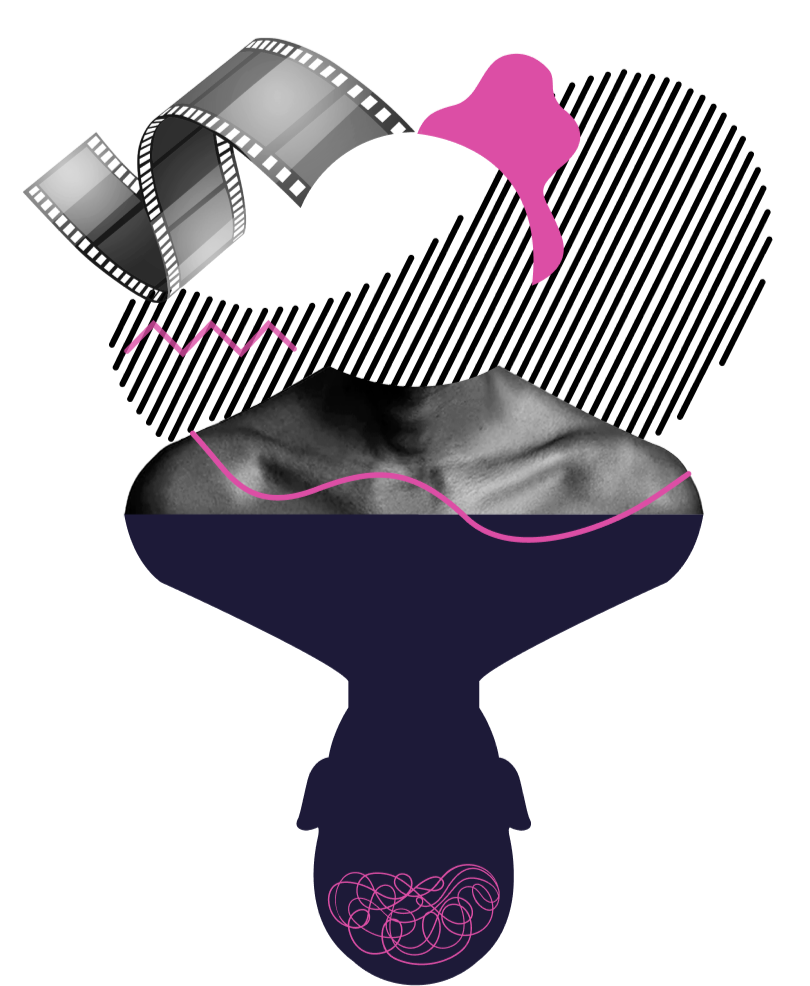
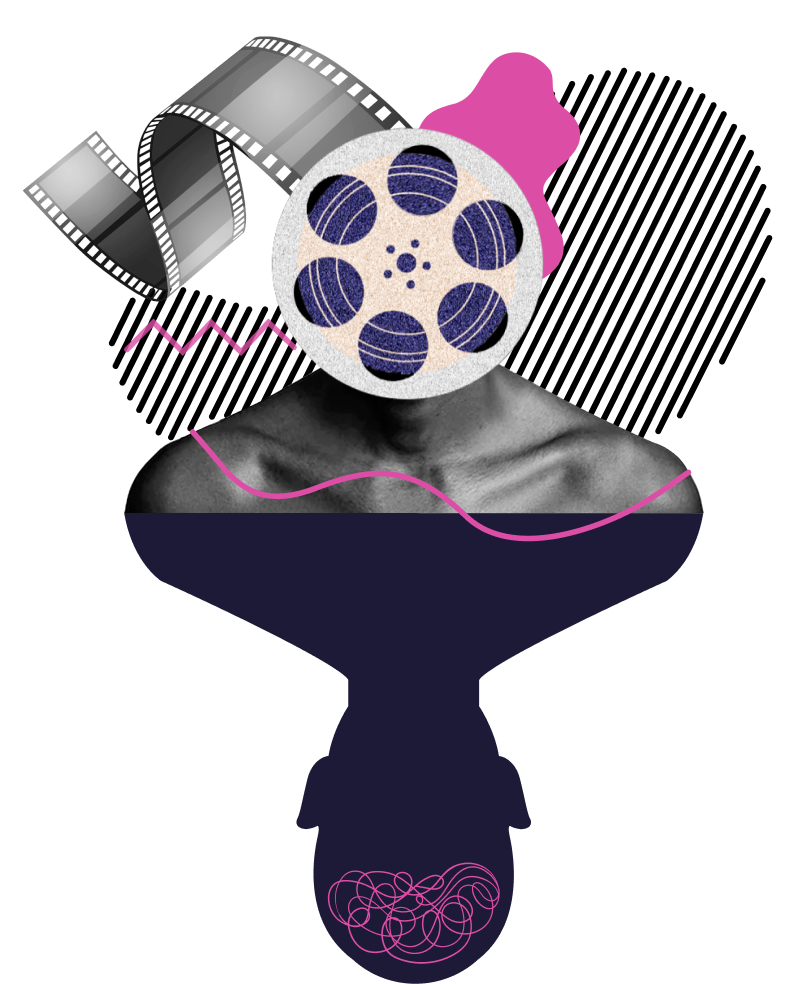
Late 1800s
Since the inception of the film industry in the late 1800s, audiences have been subjected to many movies that portray various mental health conditions. While some films have created a positive conversation regarding mental health and even encouraged a societal change in the outlook of certain conditions, other films have caused outrage due to the highly stigmatized approach that they pursued.
It is important to note that films are one of the most impactful means of art, with millions of us regularly consuming this type of entertainment.
Although you may feel that you wouldn’t let a movie alter your opinion, there have been many instances where films have shifted the mindset of the masses. This can be a significant issue regarding a topic as diverse as mental health.
Harm arises when portrayal becomes inaccurate or over-dramatized for comedic effect or entertainment, as people start to see serious conditions as humorous or untrue. Art is a perfect opportunity to change people’s opinions. Still, there is no doubt that many filmmakers have chosen the comedic approach instead of trying to create a more positive and realistic outlook on these conditions.
Hypnotic Trance State
As we indulge in the powers of arts & entertainment, our minds go into a hypnotic trance state, in which we are the most impressionable. That said, it is no surprise that what we see in films influences our opinions and views, even if this happens subconsciously. Therefore, it is vital that those directing, making, and starring in films challenge mental health portrayal to reduce the chances of the public believing stereotypes that aren’t true.

In this guide, we will delve into some of the most well-known mental health conditions and how they are portrayed in films. We will assess if their portrayal has led to positive or negative impacts and if this impact matched the film’s reception.
Anxiety Disorders
It is estimated that almost 7 million adults in the United States suffer from anxiety, showing a huge need for this condition to have representation in the film industry. Struggles related to anxiety disorders include consistently feeling nervous and tense, rapid breathing and shaking, a sense of dread, and overthinking events to an unhealthy level.
Often, films and art forms alleviate stress and anxiety, as when viewers can relate to what they are viewing, movies become much more personal, and this is no different for mental health in film. However, if the disorder is displayed inaccurately, it can cause great offense to viewers and empower negative thoughts and conversations regarding the condition.

With this being said, which films have created positive impacts and which left viewers conflicted regarding how anxiety was represented?
Girl, Interrupted
Starring two of Hollywood’s leading ladies, Winona Ryder and Angelina Jolie, Girl, Interrupted is one of the most well-known films that cover multiple mental health issues. However, its predominant focus is on anxiety.


Year 2000
Like many great films, Girl, Interrupted is based on a book with a moving story that sees Winona Ryder’s character, Susana, hospitalized after a suicide attempt. At the time of the film’s release in 2000, society wasn’t used to seeing young women portrayed in such an honest, sensitive, and poignant way. It certainly struck a chord with those struggling with similar feelings of anxiety.
Speaking on the film to The New York Times in 1999, Ryder said
“I hope the teenagers who feel alone out there will see this movie and say, ‘Thank God.’ If I had seen this movie at 19, I would have taken a lot of comfort in it… Life is just weird. Life is a mess. This world is a mess, and anyone who understands this world I would worry about… We’re normal to feel crazy, in a way.”
And Ryder was right. Many teenagers and people of all ages found much comfort in the film. While there are still degrees of uncertainty on how femininity is portrayed, even when representing mental health issues, Girl, Interrupted delivered a solid representation of anxiety as the book did.
Copycat

Sigourney Weaver
This film raises both positive and negative depictions of anxiety, paired with the fact the film is slightly traumatic itself! The film follows Dr. Helen Hudson, a psychologist played by Sigourney Weaver, and her struggles with agoraphobia triggered by a brutal murder attempt from one of her lecture attendees.
As the film goes on, we see that Hudson struggles with common agoraphobic traits such as panic attacks, inability to work, struggles to leave her home, and physical discomfort portrayed through shaking, trembling, sweating, and shortness of breath. These characteristics displayed throughout the film are realistic and sincerely represent the disorder.
However, the disorder portrayal becomes slightly less realistic when Hudson faces her fears and teams up with two detectives to solve a serial killer case. While you can, of course, overcome a disorder, it seems oversimplified in Copycat, in which Hudson seems to disregard her trauma more quickly than one would be able to in reality.
Depression
Depression is one of the mental health conditions that has had the most awareness raised around it in the last few decades. The sheer number of Hollywood blockbusters that include characters fighting depression indicates that this disorder is shared by many, with over 21 million Americans estimated to have encountered a depressive episode in 2020 alone.
We can’t deny that this figure is frightening and shows why we need representation regarding this challenging condition. Symptoms of depression include extensive periods of unhappiness, losing interest in beloved hobbies, lack of sleep, suicidal thoughts, and low self-esteem.

The above symptoms are commonly expressed in films that star characters suffering from the condition. Many movies accurately portray this with incredible acting performances that leave a lasting impact on audiences. On the other hand, there have been instances where depression has been explored inaccurately, further pushing negative stigmas regarding the condition.
Here are some of the most impactful films that have portrayed depression, along with the impacts these films have had;
Little Miss Sunshine
This film is one of Hollywood’s creations that doesn’t fail to leave the audience feeling hopeful despite the accurate depictions of Major Depressive Disorder explored through the character Frank.
Frank lives with his sister’s family throughout the film after a failed suicide attempt. The portrayal of Frank’s suicidal thoughts is realistic and proves that anyone can feel this way without glorifying the disorder in ways that many other films do. Instead, we see how major depressive disorder can be triggered by life events (such as Frank’s lover leaving him).
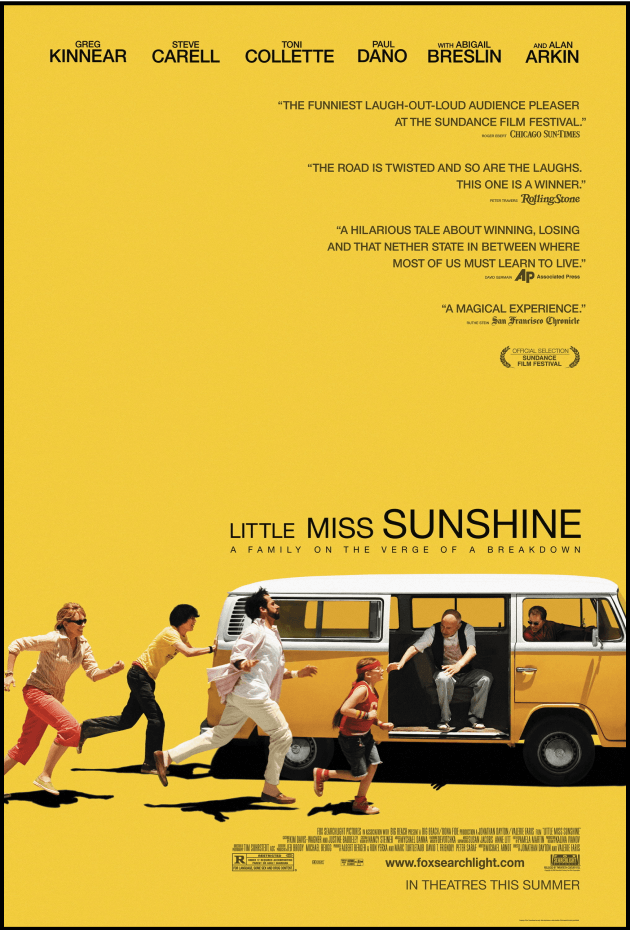

1/8
LGBTIQ+ people aged 18 to 24 has attempted to end their life.
Another poignant factor of Little Miss Sunshine’s depression portrayal is that Frank identifies as gay. At the time of the film’s release in 2006, openly gay characters suffering from mental health disorders in a relatable way that wasn’t poked fun at was less common, despite the harrowing statistics demonstrating one in eight LGBTIQ+ people aged 18 to 24 has attempted to end their life.
Therefore, Frank’s portrayal is much needed in cinema, and Steve Carrel brings this character’s relatability and sincerity to life in a powerful way.
Cake

Jennifer Aniston
Over the past 30 years, we have seen Jennifer Aniston star in hundreds of exciting roles, but Cake saw her take on a role that is a considerable shift from her usual loveable romantic comedy characters.
Aniston plays Claire Simmons, a character suffering from chronic pain after being in a car accident that took her son’s life. During the film, we see how Simmons’ chronic pain affects her mental health, with irritability, isolation, loss of interest, and grief indicating that she suffers from depression.
Cake was met with mixed reviews from critics, with some concentrating more on the fact that Claire Simmons is an unlikeable character instead of focussing on what has led her to show up in this way. As this role was a massive jump for Aniston at this point in her career, we wonder if some critics couldn’t separate their preconceived ideas of the actress from the storyline, which does Aniston, the movie, and what it represents a huge disservice.
Chronic Pain
The truth is that chronic pain is something society still needs help to understand and is perhaps one of the most overlooked conditions many people suffer from. With chronic pain comes mental health issues due to the isolation that suffering from these conditions comes with, and it is clear that Cake strived to portray this. While the film definitely isn’t perfect, it was a massive step in the right direction for raising awareness about chronic pain and how such conditions affect mental health.
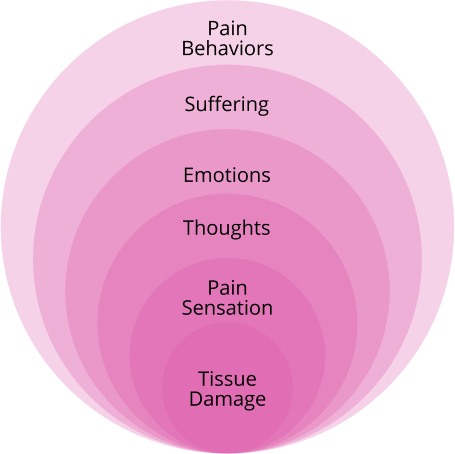
Bipolar Disorder
Bipolar disorder is a mental health condition that predominantly affects an individual’s mood. Someone suffering from bipolar may encounter the following;
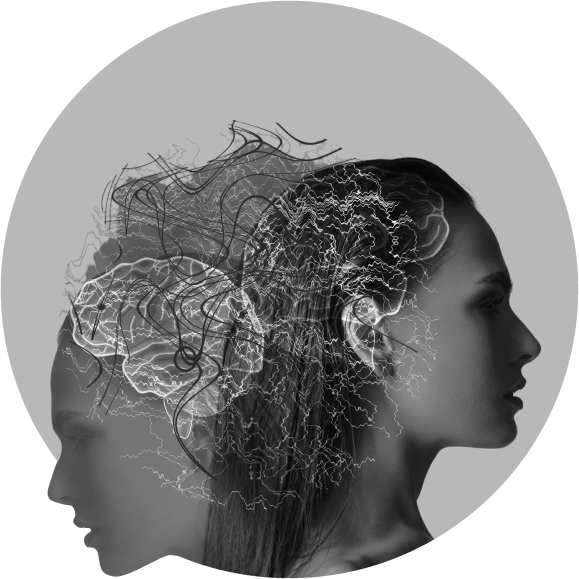
Manic episodes in which you feel an extreme adrenaline rush referred to as a high.
Depressive episodes which leave you feeling low.
Manic or depressive episodes which can include psychotic symptoms such as illogical thinking, rushes of energy, and extreme self-importance.
While someone without bipolar can experience these feelings, having bipolar amplifies these emotions, in which sadness and happiness feel much more intense and lead to the above episodes.
Unfortunately, bipolar disorder is a mental health condition that still has an inaccurate stigma attached to it. Misconceptions surrounding the disorder include people using the phrase bipolar to explain a slight change in their mood, adding to the stereotype that this condition is similar to having mood swings.
This stigma comes across in the film industry, with several films focussing on negative bipolar traits such as anger more than other elements of the disorder, distorting viewers’ opinions on the condition. While causing harm is likely not the director’s intention, striving to show realistic elements of the disorder is essential. Bipolar disorder is a broad subject, with so much more that could be shown and represented through credible actors and scriptwriting than stereotypes surrounding anger.

Let’s delve into some films starring bipolar characters and assess if these portrayals cause harm or good;
Silver Linings Playbook
Silver Linings Playbook is a critically acclaimed film starring two of Hollywood’s top actors, Bradley Cooper and Jennifer Lawrence. The film follows Bradley Cooper’s character Pat’s struggles with bipolar, starting from being released from a psychiatric hospital.
Throughout the film, Pat channels his mania into running and ranting, displaying typical symptoms of bipolar disorder. One of his manic episodes reaches its peak when he beats his ex-wife’s partner up, which due to its dramatization, almost seems justified. However, Pat doesn’t show the usual guilt or recognition of his actions that we would expect, indicating that his struggles go further than just being angry about an affair the way we have seen in hundreds of other Hollywood films.
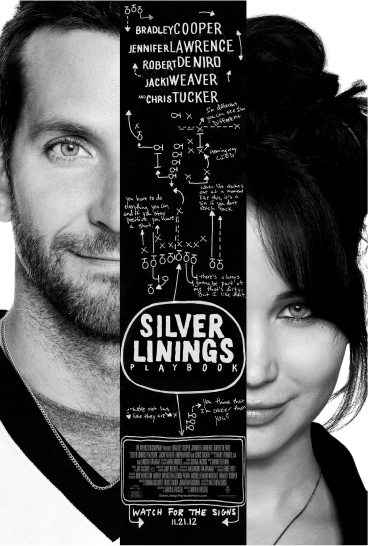

Jennifer Lawrence / Tiffany
Eventually, he meets Tiffany (played by Jennifer Lawrence), who soon becomes a romantic interest. Tiffany also suffers from mental health disorders, although it is never disclosed which medical condition she has. One of the film’s most moving scenes sees Pat and Tiffany discussing their mental health struggles, perhaps one of the most sincere and proactive parts of the movie regarding destigmatizing bipolar disorder.
While the film depicts struggles surrounding bipolar relatively accurately due to excellent acting, realistic symptoms, and portrayals, there was some controversy surrounding the fact that the film indicates that conditions such as bipolar can be solved by falling in love.
However, it is crucial to keep in mind that films are meant for entertainment, and had the ending not played out this way, the film would likely not be as satisfying for viewers, even if it does slightly deduct points on the scale of realism.
Manic
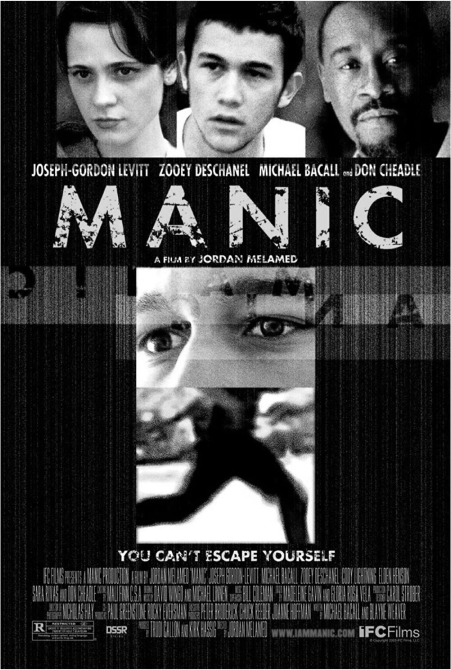
Manic is a film with a more gritty approach than Silver Linings’s. The storyline follows Lyle, an aggressive teenager admitted to a juvenile psychiatric ward after beating up another teen with a baseball bat.
During the film, we see Lyle strike connections with other young people staying at the ward, with his love interest Tracy being someone who leaves a lasting impact. Both have similar awful experiences regarding sexual abuse, which leads Lyle to have a protective feeling over Tracy.
Throughout the film, we see Lyle experience multiple violent outbursts while forming a friendship with Chad, a patient suffering from bipolar. As a whole, the movie explores various situations that can significantly impact mental health, demonstrating how different young people can act as a result of experiencing trauma.

Schizophrenia
Schizophrenia is one of the most widely misunderstood mental health disorders, with mainstream media, films, and TV shows adding to harmful stereotypes that surround the condition.

The condition is incredibly complex, making it challenging for actors to accurately portray. This often leads to negative portrayals, with characters commonly jumping to violent tendencies and vilifying the condition for horror effects. It goes without saying that implementing this harmful stereotype pushes an agenda that makes viewers fearful of the condition, without really understanding it.
Luckily, there have been some more accurate depictions of Schizophrenia in recent years that help to push through the negative stereotypes and previous portrayals of the condition. Let’s take a look at them;
Words on
Bathroom Walls
Released in 2020, Words on Bathroom Walls tells a beautiful and powerful tale of Adam, a witty and clever teen diagnosed with mental illness during his senior year. The main symptom explored throughout the film is Adam’s hallucinations, which are portrayed to the audience through three individuals only Adam can hear and see.
While this may sound humorous and can add a charismatic nature to the film in some senses, it is clear that Adam’s hallucinations are portrayed to represent how they can impact someone with Schizophrenia’s everyday life. His hallucinations explore the difficulty surrounding blocking out the noise and concentrating on daily tasks no matter how academically gifted you may be.


Taylor Russell / Maya
The film manages not to demonize or romanticize mental health, instead showing Adam’s condition in an insightful light highlighting how challenging life becomes for those with similar conditions. Despite the powerful and emotive aspects, viewers can also feel entertained while watching the film due to the budding romance Adam experiences with his love interest Maya, portrayed by Taylor Russell.
Of course, romance mixed with mental health can sometimes leave viewers dissatisfied. Still, Words on Bathroom Walls delivers this gently and ties in with Adam sustainably managing his condition.
A Beautiful Mind
John Nash
This film is perhaps one of the most realistic we will cover in our article as it is based on real-life events following the life of mathematician John Nash. Elements of the film aren’t accurate regarding Nash’s life, but the depiction of Schizophrenia is realistic and offers audiences excellent insight into the condition.

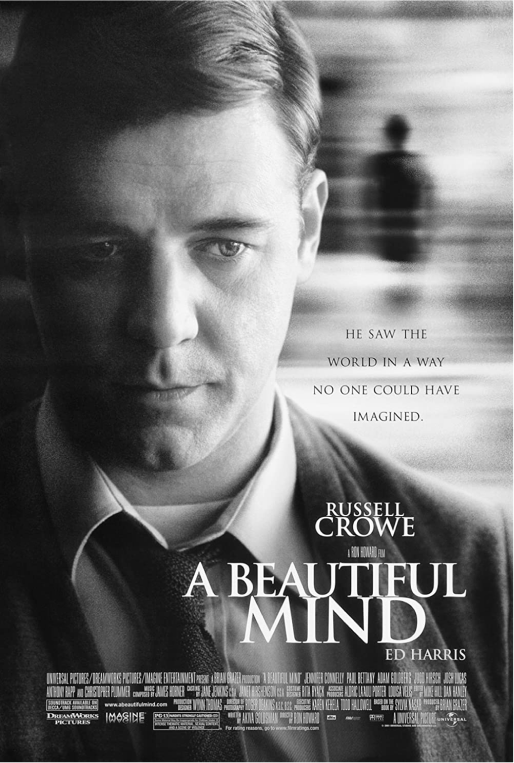
The film hones in on common symptoms of Schizophrenia, such as grandiose illusions, where Nash sees himself as more original than his other classmates, showing an exaggerated view of his self-importance.
In other scenes, we are shown that John experiences hallucinations that affect his work and everyday life. It is said that, in reality, Nash experienced hallucinations in the form of hearing voices, leading to delusions. In the film, this is portrayed to the audience through physical hallucinations to ensure this element of Schizophrenia is accurately displayed.
A Beautiful Mind was one of the first films to accurately portray Schizophrenia while simultaneously eradicating the concept that individuals suffering from the condition can’t achieve momentous milestones like Nash did despite his mental health troubles.

PTSD
PTSD is a condition that occurs after someone has lived through or experienced a traumatic event. The disorder includes symptoms such as flashbacks, nightmares, sleeping problems, and feelings of isolation and irritability.
While PTSD can be triggered by a range of life events, in film, it is commonly portrayed through veterans and those that have been abused. This makes for heavy content; often, these films can be more intense and dramatized than others.
Despite these films being made for entertainment, there are many ways that accuracies are portrayed due to a sufficient number of real-life events that can act as inspiration for film subjects. From wartime films to romance and thrillers, PTSD is a condition that has been bent to fit different characters that leave viewers on the edge of their seats while also raising awareness. Here are some honorable mentions;
American Sniper
Oscar Awards
Due to the excellent acting and gripping storyline, this film scored Bradley Cooper an Oscar nomination while simultaneously raising awareness for the PTSD that those who serve in the army can entail.

The film follows Cooper’s character Chris Kyle as he tours Iraq four times, working as a sniper. Over time, Kyle became regarded as one of the greatest SEAL snipers, serving for ten years. Eventually, he leaves the military to save his marriage, but letting go of the traumatic experiences he has encountered proves to be an unimaginably difficult challenge.


Bradley Cooper / Kyle
As the film develops, we see Kyle become increasingly uncomfortable and isolated from his loved ones, leading him to volunteer and open up about his struggles. As his life gets back on track, his road to recovery commences, and we see his condition become managed more effectively.
Despite the tragic ending of this film and Kyle’s life, the screenplay accurately depicts PTSD and shows how many of those who have served in the military will initially downplay and deny their conditions.
Taxi Driver
Top 100 films
If you’re a film fanatic, there is a high chance that you will be familiar with Taxi Driver. Featured in many lists of the top 100 films of all time, this blockbuster starring Robert De Niro has stood the test of time, but how does it depict PTSD?
De Niro’s character, Travis Bickle, is a troubled taxi driver from New York. Despite only being 26 years of age, Bickle has served in the marines and the Vietnam War, meaning he has come face to face with his fair share of traumatic and mind-altering events that shape him to become the outsider he presents himself as throughout the film.
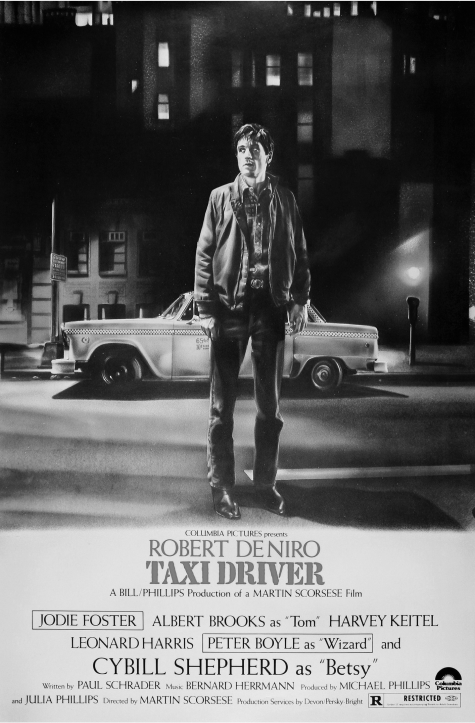
There are realistic traits of PSTD explored in Taxi Driver, such as isolation, insomnia, and feelings of obsession that stem from his inability to accept himself. However, the film is mainly focused on the terrors of New York and his eventual path to self-redemption, which sees him go from outcast to praised hero.
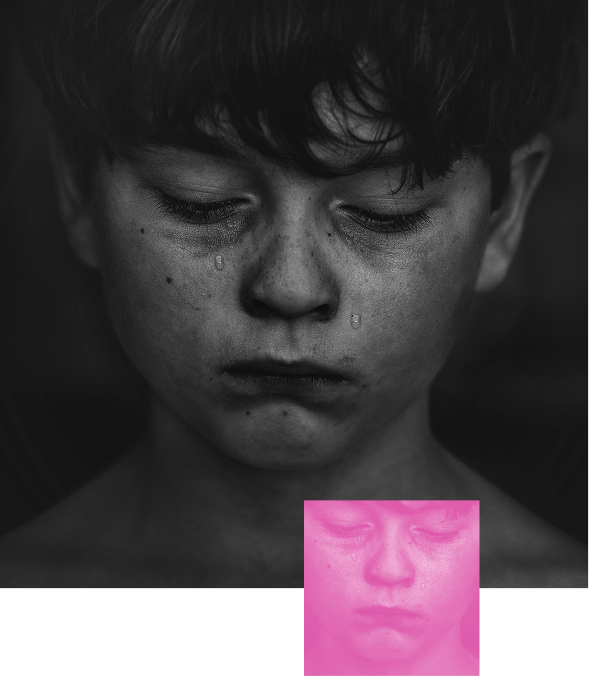
Neurodevelopmental Disorders
Neurodevelopmental disorders symptoms often start showing in children but affect people of all ages. Disorders that fall under the neurodevelopmental category include ADHD, Tourette syndrome, autism, and speech disorders.
Regarding how neurodiversity is represented in film, we see many variations in the approach but with similar outcomes. Often, neurodiverse characters are explored through a specific trait that leads them to be the odd one out or gives them a contrast to the neurotypical characters on screen. Hyperfocus and fixation are some of the most common traits we see in films.
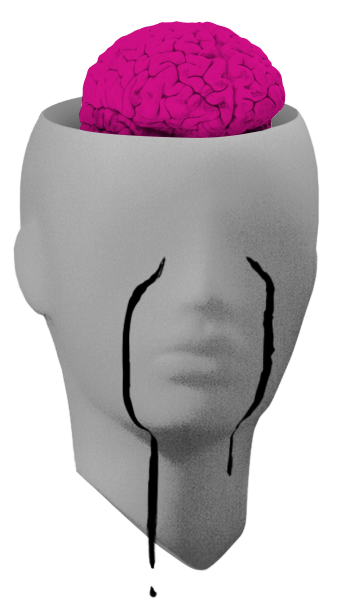
In some cases, this can be portrayed well through neurodiverse characters with specific interests and an admirable drive that helps them solve issues or achieve their goals. However, in other instances, it can become repetitive, and although hyper-fixation and focus are elements of neurodiversity, there are different ways that the film industry could explore it.
Let’s take a look at a couple of the most popular films that feature neurodiverse characters;
Rain Man
1988
We couldn’t discuss neurodiversity in the film industry without covering Rain Man, the movie that started it all regarding neurodiverse representation. It is important to note that this film is now over 30 years old, and both research and knowledge regarding neurodiversity have come on massively since this time, meaning some elements of the film are outdated.
However, if we think back to the time, for a film like this to be made in 1988 and have a generally positive reception and depiction of neurodiversity, it is no wonder why this film is considered one of the greats.
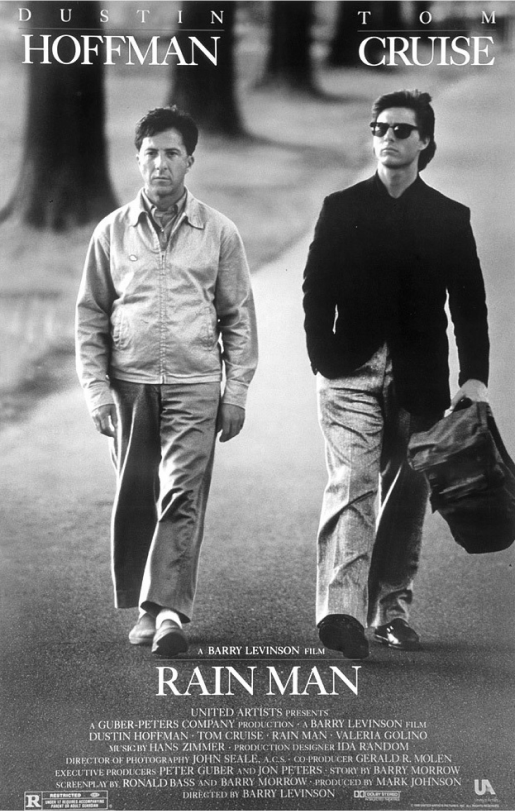

Dustin Hoffman / Raymond
Dustin Hoffman took over a year studying autism to ensure his character’s symptoms and personality were accurate, pulling traits from different people living with autism. Hoffman’s character, Raymond, is also a savant, but Hoffman is said to have included autism portrayal to add depth to his character.
While this made for a more believable watch, the composite savant approach made much of the public think that all those with autism would have similar savant abilities, which Hoffman portrays throughout the film. Of course, this is not the case, and autism is a broad spectrum, with numerous traits showing differently depending on the person.
We can assume that without Dustin Hoffman’s dedication to studying savant and autism traits in depth, the film probably wouldn’t have had the lasting power it has. Through his knowledge, he brought the character of Raymond to life, thus adding to the storyline without causing offense and instead bringing awareness to neurodiversity, which was almost unheard of during this time.
P.S. I Love You
It is rare for neurodiverse characters to be included in the romance genre, but P.S. I Love You proved that this inclusion should be more frequent. Harry Connick Jr. is to thank for the character (Daniel Connely) realistic portrayal, which sees the main character Holly Kennedy abide in him while she comes to terms with the loss of her husband.

Throughout the film, we see that Daniel suffers from autism, and he refers to the condition a few times. While some have picked fault with how other characters described his lack of social skills as rudeness, others enjoy seeing a less stereotypical approach to autism on the big screen.
The main autism symptoms we see Connely struggle with are social cues and the fact he doesn’t have a filter. However, this doesn’t stop him from being able to make genuine bonds and be an integral part of the story, which, again, is something we rarely see in the romance genre. While he may not get the girl in the end, he does leave a lasting impression and his inclusion was worthwhile.
Obsessive Compulsive Disorder (OCD)
Obsessive-compulsive disorder (OCD) is an anxiety condition often subject to many hurtful jokes, with many people not understanding the weight of this condition on those who have been clinically diagnosed with it.

Regarding the condition’s portrayal in movies, many interpretations have caused offense due to inaccuracies and being used as a joke punchline. Stereotypes surrounding the condition include the concept of those with OCD feeling a need to clean all the time, which isn’t true, yet is included in many mainstream media depictions of the condition.
Using stereotypes as a way to generate laughs and revenue is exploitative, and OCD is one of the conditions that are subject to this type of exploitation often. However, some films exist that display the disorder more accurately and positively, such as As Good As it Gets;
As Good As it Gets

As Good As it Gets stars Jack Nicholson as novelist Melvin Udall and sees his struggles unfold regarding creating meaningful relationships due to his condition. Throughout the film, Melvin learns how to deal with his OCD with help from his neighbor and love interest, showing another positive spin on what can be a debilitating condition.
We recommend this film to anyone searching for a realistic yet light portrayal of OCD without the poorly timed jokes and jibes that this condition is often at the receiving end of.
Conclusion
While there have been many harmful interpretations of mental health conditions in the film industry, it is clear that representation is necessary and can positively influence society.
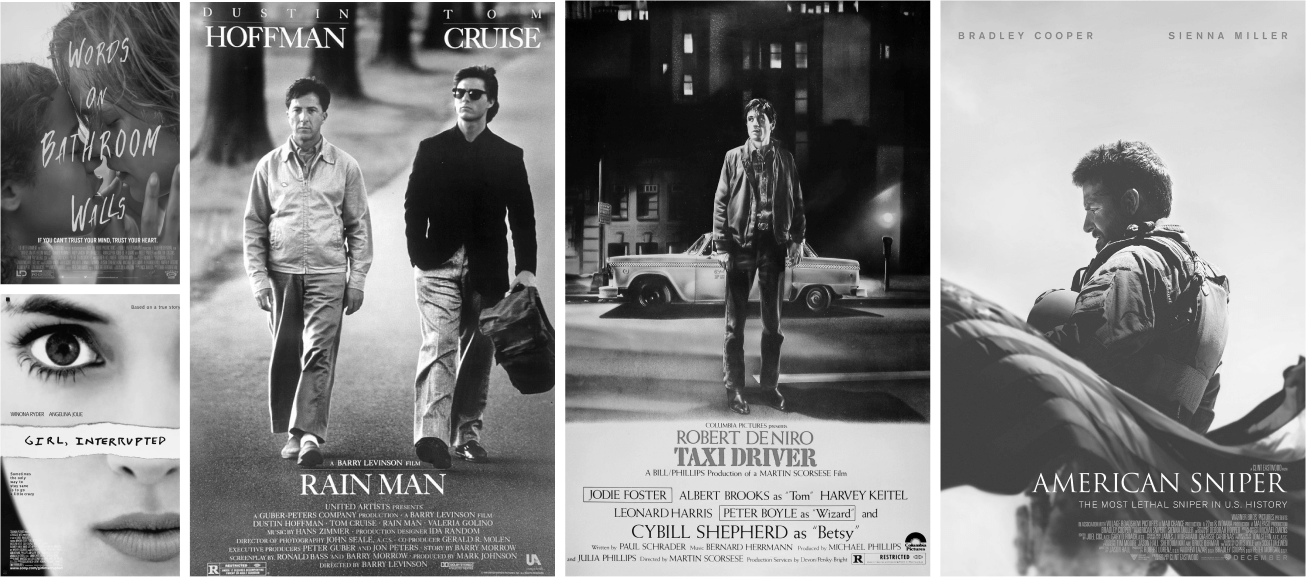
Considering films such as Rain Man and the social footprint they left helps us draw conclusions that representation in films does much more than just entertain audiences. As the film focuses on a relationship between a neurotypical and neurodivergent, many people related to the film and found comfort in that relatability.
The next step for the film industry is to match representation with inclusivity, casting actors who may be neurodivergent to play neurodivergent characters. We have already seen this shift in TV, with the likes of the series ‘Everything’s Gonna Be Okay’ starring Kayla Cromer, an actress with autism playing a character with autism.
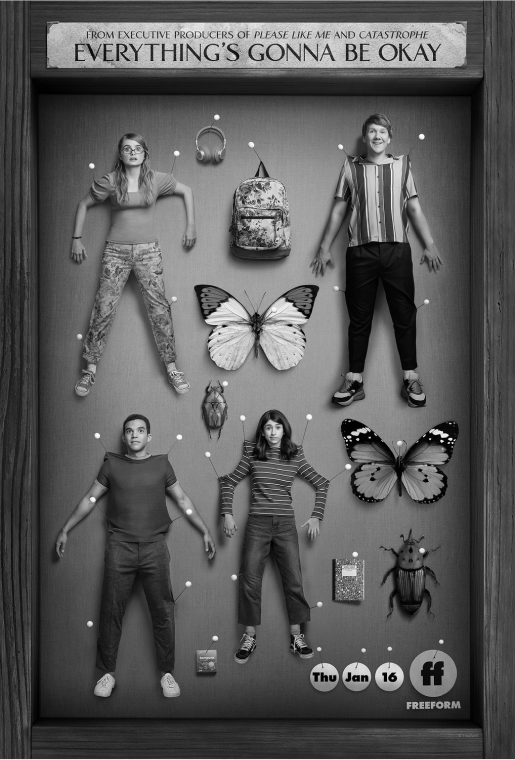
Not only does inclusive casting help for authenticity, but it also helps to prevent stereotypes from continuing to manifest on screen, ensuring audiences leave with a better and more accurate idea of different disorders and mental health conditions.
While the films we covered in our article didn’t intend to cause harm, some did by spreading inaccuracies to impressionable audiences. The conclusion we can reach from this is for representation to be powerful, it must be accurate, and this all stems from education.
Ensuring those writing and making films covering different mental health conditions know the subject is essential. Additionally, casting actors that can relate or have the capacity to pursue substantial research is a definitive way to make positive change in the film industry.
With accurate representation, mental health awareness can continue to evolve and grow while audiences can remain entertained and satisfied with what they view.
